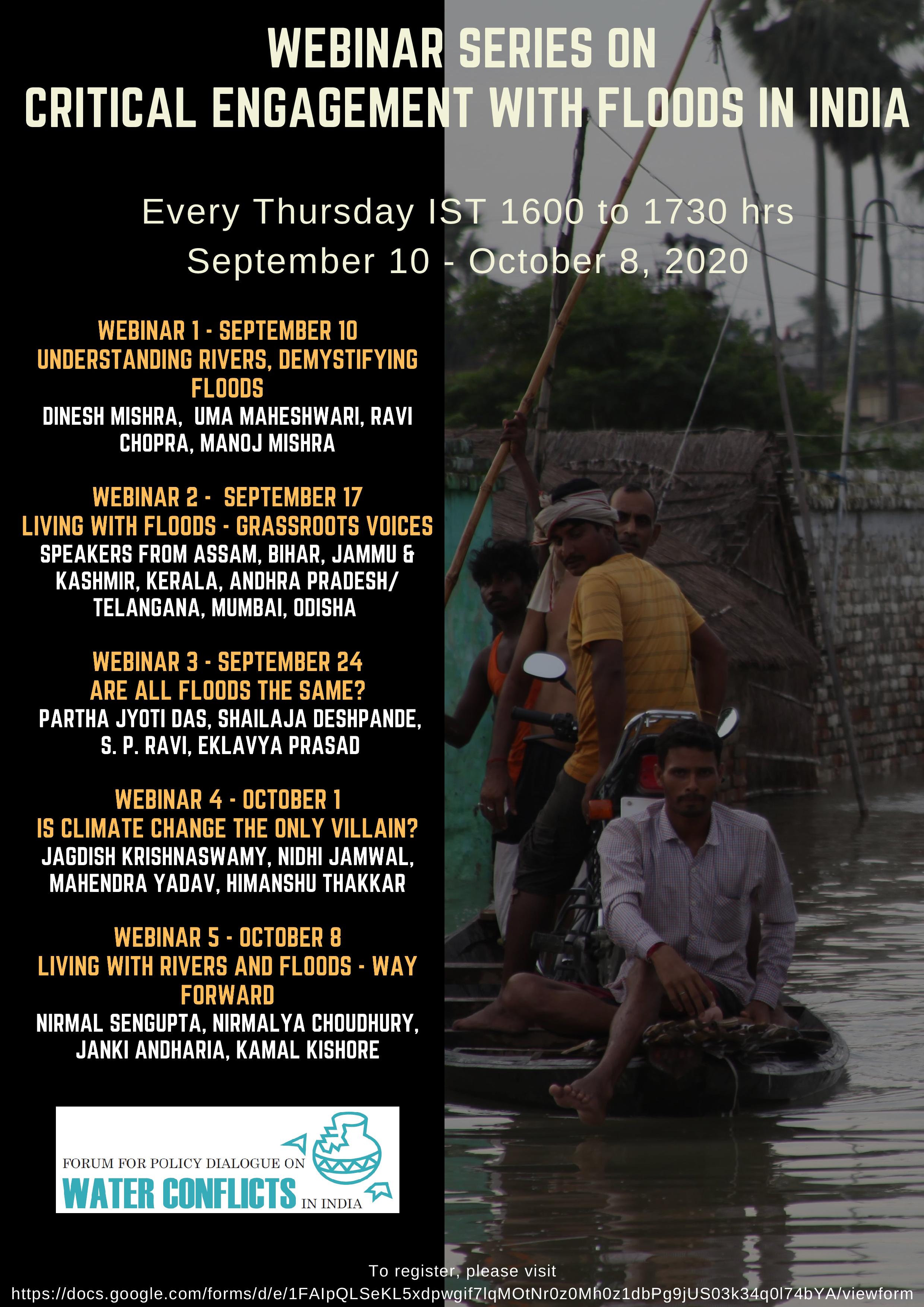Droughts and Floods
Swollen rivers engulf houses and erode banks wreaking havoc in Bihar
Posted on 04 Sep, 2020 08:16 PMFloods coupled with erosion increase the woes of Bihar

Webinar Series - Critical Engagement with Floods in India
Posted on 03 Sep, 2020 03:49 PM
About the webinar:
Swachh Survekshan 2020: Indore tops in cleanest city category
Posted on 25 Aug, 2020 09:19 PMIndore once again tops the Swachh Survekshan 2020 in the cleanest city category

With no food on their plate, people seek government help
Posted on 20 Aug, 2020 04:44 PMFor about last three weeks, Dhananjay Kumar along with his wife and children have been living on the embankment under their plastic shed following the late night July floods that submerged their house.

Livestock rearers and fishers bear the brunt of cyclone Amphan
Posted on 18 Aug, 2020 10:14 AMThe Amphan cyclone that struck the Sundarbans in the month of May this year has wreaked havoc in the area destroying lives and livelihood. A lot of the locals living in the Sundarbans depend on animal husbandry and fishing to earn a living. The cyclone destroyed animal rearing shelters and swept away most of the cattle and domestic animals.

Locals struggle with WASH issues post-Amphan
Posted on 17 Aug, 2020 12:17 PMUN’s recognition of safe and clean drinking water and sanitation as a human right recently hit a decade and this makes us ponder even more about the situation in the Sundarbans after the Amphan cyclone. The destruction caused by Amphan in the Sundarbans poses a massive threat to the very right to safe and clean drinking water and sanitation of the people living there.

Gender-sensitive response to the climate crisis
Posted on 14 Aug, 2020 11:19 AMA crowd of people jostling by the ticket counter at Jhansi railway station in Uttar Pradesh; men and women, some with families in tow, boarding trains to Delhi, Lucknow, Mumbai and other big cities. These are common sights during the summer months at Jhansi, a major town and railway junction.

Monsoon experiences a countrywide deficit of 10 percent in July
Posted on 12 Aug, 2020 08:27 AMMonsoon 2020: Countrywide deficit of 10 percent in July; September may have heavy rains

Amphan’s impact on farming and livelihood in Sunderbans
Posted on 11 Aug, 2020 05:46 PMThe Amphan cyclone has disfigured the lives of people living in the Sundarbans. Houses have been torn apart, farms have been filled with brackish water making the land unsuitable for farming and betel leaves have been destroyed. People in the Sundarbans are in a life-threatening situation with makeshift shacks to live in and no means to earn a living.

Banking on rainwater harvesting
Posted on 11 Aug, 2020 10:27 AMNational Water Mission’s (NWM) has launched a campaign ‘Catch the rain’ on a pan India basis to nudge the states and stakeholders to create appropriate rainwater harvesting structures (RWHS) suitable to the climatic conditions and sub-soil strata before the onset of monsoon.





